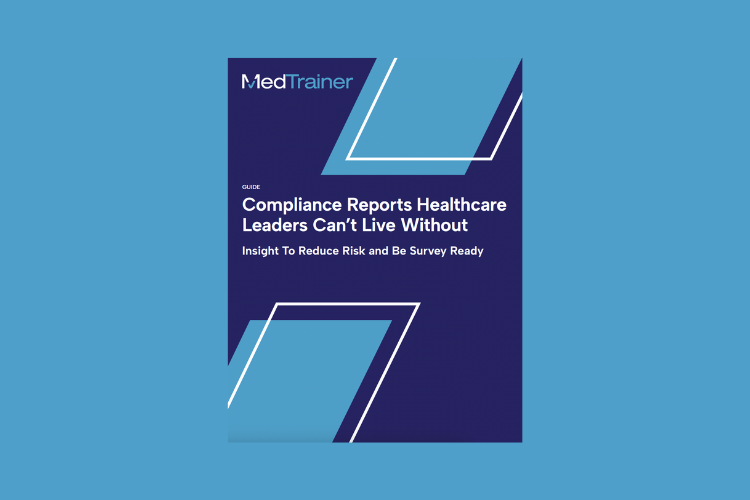We’ve all seen healthcare news stories related to medical errors. A doctor performs surgery on the wrong body part. An instrument is left inside a patient’s body. Each is considered a critical mistake or incident. In this blog, I’ll answer the question “why is incident reporting important in healthcare?,” why most medical errors and emergencies are reported through an incident reporting system, what makes up an incident report, and real-life examples of where incident reporting saved or sunk a healthcare organization.
What is an Incident Report?
An incident report is thorough documentation of the incident, including all relevant details that caused it and any outcomes that stemmed from it. The key to a good incident report is completeness and accuracy, and that means documenting as much information as possible.
Types of Healthcare Incidents
Incidents can involve anyone within a medical facility, including nurses, physicians, or visitors. Although you might think of an incident as always causing patient harm, I can tell you that this is not entirely true. Here are the four common types of incidents in healthcare:
- Near-miss incidents: Situations where potential harm could have occurred but didn’t. Examples of near-miss incidents are sliding on a wet floor or forgetting to initially label a blood specimen, but then catching it before sending it to the lab.
- Injury or adverse incidents: Scenarios that cause an individual harm but don’t lead to serious injury or death. Example: A doctor accidentally administers the incorrect dosage of a blood pressure medication or a nurse who falls in the hallway and sprains their ankle.
- Exposure incidents: Unanticipated events that involve contact with blood or other bodily fluids that can potentially cause harm. Example: Needlestick injuries or accidental exposure to airborne diseases, like COVID-19 or tuberculosis.
- Sentinel events: Result in severe or permanent harm or death. Example: Performing surgery on the incorrect site or a fall causing a serious head injury.
Why Incident Reporting is Essential
Incident reporting is essential to maintain a healthcare organization’s compliance with state and federal regulations. It can potentially reduce medical errors and increase safety for organizations nationwide. By using incident reporting software, healthcare organizations can identify incidents and perform a root-cause analysis. A root-cause analysis helps identify the true cause of an incident. The cause may be a simple human error, a one-time mistake, or a repeated incident due to a process failure. Incident reporting creates a culture of safety and allows healthcare organizations to seek continuous improvement in their care practices.
Real-World Incident Reporting
There are instances where healthcare workers didn’t submit an incident report or an organization failed to report information in an accurate, timely manner. This can lead to individual injury, delay in care, and medical lawsuits. Here are some examples of where a lack of reporting sunk an individual or organization:
- Vanderbilt failed to report a medication error resulting in patient death. A nurse accidentally gave a patient a paralytic instead of a mild sedative, which resulted in death. The nurse logged the mistake in the organization’s incident reporting system but Vanderbilt never notified state authorities and attempted to cover up the death. The hospital eventually settled a civil lawsuit with the patient’s family. The nurse is no longer working in healthcare.
- Dallas Medical Center ignored reports of several patient injuries caused by a neurosurgeon. Several nurses and fellow physicians reported concerns surrounding spinal surgeries performed by Dr. Christopher Duntsch, profiled in the drama series Dr. Death. Many of these improperly performed surgeries and complications led to patient death and permanent disability. Although Dallas Medical Center forced Dr. Duntsch to resign, they failed to notify the proper authorities. This eventually led to multiple lawsuits against the healthcare organization.
Incident reporting is designed to save lives and address healthcare mistakes – and it works. Here are examples of where incident reporting made a positive difference:
- Several medical device malfunctions led to urgent Federal Drug Administration recalls. When healthcare professionals and organizations report equipment malfunctions to the correct authorities, the FDA may recall these items based on increased reports. Incident reporting has led to several FDA recalls in the past, with some including breast implants, insulin pumps, and defibrillators. These recalls have reduced the amount of cases that could have caused harm or injury.
- Healthcare worker suffers a needlestick injury but doesn’t contract Hepatitis C. A nurse accidentally incurred a needlestick injury while placing a dirty needle in the sharps disposal container. The nurse reported it immediately. The hospital screened the patient’s blood for potential communicable diseases, which returned positive for Hepatitis C. By seeking immediate treatment and beginning postexposure medications, the nurse did not contract the virus.
See if your infection control protocols are effective.
Prioritize Incident Reporting with Digital Solutions
Incident reporting, especially in large healthcare organizations, can be daunting and voluminous. Most large systems use some type of compliance and risk management tool. Adding a digital incident reporting solution can help eliminate delays, identify trends, and resolve issues more quickly.
Find out how MedTrainer can enhance your compliance programs with digital incident reporting solutions for any size organization. Contact us to learn more.

The best compliance and credentialing reports tot surface critical insights and keep you survey ready.
